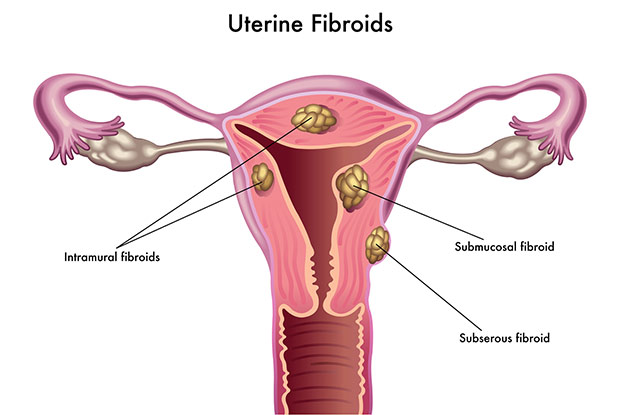
Uterine Fibroids Surgery Side Effects
There are two kinds of fibroid removal surgery, myomectomies and hysterectomies, and there are two of each, abdominal and laparoscopic. A myomectomy removes only the fibroids themselves, while a hysterectomy removes the uterus. Abdominal surgeries require incisions into the abdomen and the uterus itself. Laparoscopic procedures make only small incisions, and the internal surgery is done by laparoscope, not by hand.
For women who hope to have children, a myomectomy is the only viable surgical option. Even so, most forms of myomectomy will scar and weaken the uterine wall, and there is always a risk that this damage will render pregnancy impossible. Infertility is thus a possible uterine fibroids surgery side effects, even from procedures that aim to preserve reproductive capability. Any kind of fibroid removal surgery increases the risks of complications during pregnancy and birth, and scarring on the uterine wall will sometimes make a cesarean section necessary to avoid the danger of rupturing the uterus during delivery. There is also the risk that excessive bleeding and blood loss during a surgical myomectomy will mandate a full hysterectomy. While this chance is small, it should be carefully considered by women who intend to have children.
Uterine fibroid surgery side effects include long recovery times, nausea, fever, fatigue and other postmenopausal symptoms. Recovery from a hysterectomy can take a year or even more, while most patients recover from a myomectomy within weeks or months. Abdominal procedures have longer recovery times and will leave visible scarring. Laparoscopic procedures generally have shorter operating and recovery times because the incisions are much smaller. The body’s production of estrogen typically decreases after the procedure, leading to some temporary symptoms of menopause. Some women prematurely enter menopause after fibroid removal surgery, although the chance of this happening is slight.
The Danger of Laparoscopic Power Morcellation:
Fibroid Removal Surgery Cancer
With all the potential uterine fibroids surgery side effects, patients, doctors and surgeons have been looking for alternative procedures that cost less, pose fewer risks and preserve fertility. Laparoscopic power morcellation is a laparoscopic myomectomy – meaning it involves no major incisions – that has become increasingly common, recommended by doctors as a simpler, cheaper option for fibroid removal. A laparoscope is inserted into the uterus via a small incision and is directed by the surgeon from the outside. The laparoscope is equipped with a “morcellator” that shreds and destroy the fibroid tissue.
The FDA recently revealed that laparoscopic power morcellation is known to increase patients’ risk of cancer significantly. The procedure itself is not carcinogenic, but latent cancers present in the fibroid or surrounding tissue on the uterine wall may be released and become malignant. About 1 in 350 women have a type of uterine cancer called uterine sarcoma, and which which can be released into the uterus and the bloodstream as a result of morcellating the tissue. The FDA has since strengthened its initial warning about laparoscopic power morcellation, although it has yet to issue a complete ban. Some hospitals have voluntarily banned the procedure. It isn’t yet known how many women have developed fibroid removal surgery cancer as a result of laparoscopic power morcellation. Women who have undergone the procedure should get tested for presence of uterine cancer. Women who developed uterine cancer after after laparoscopic morcellation may be entitled to compensation and should consult a lawyer using the link below.
Click here to receive your free case evaluation.
CitizensReport
Latest posts by CitizensReport (see all)
- 4 Natural Alternatives To Energy Drinks That Will Make You Feel Healthier - February 19, 2018
- NBC Nightly News Publishes Expose On IVC Filters - February 18, 2018
- Good Sugar, Bad Sugar: Why You Should Eat More Fruit - February 16, 2018


Join the discussion